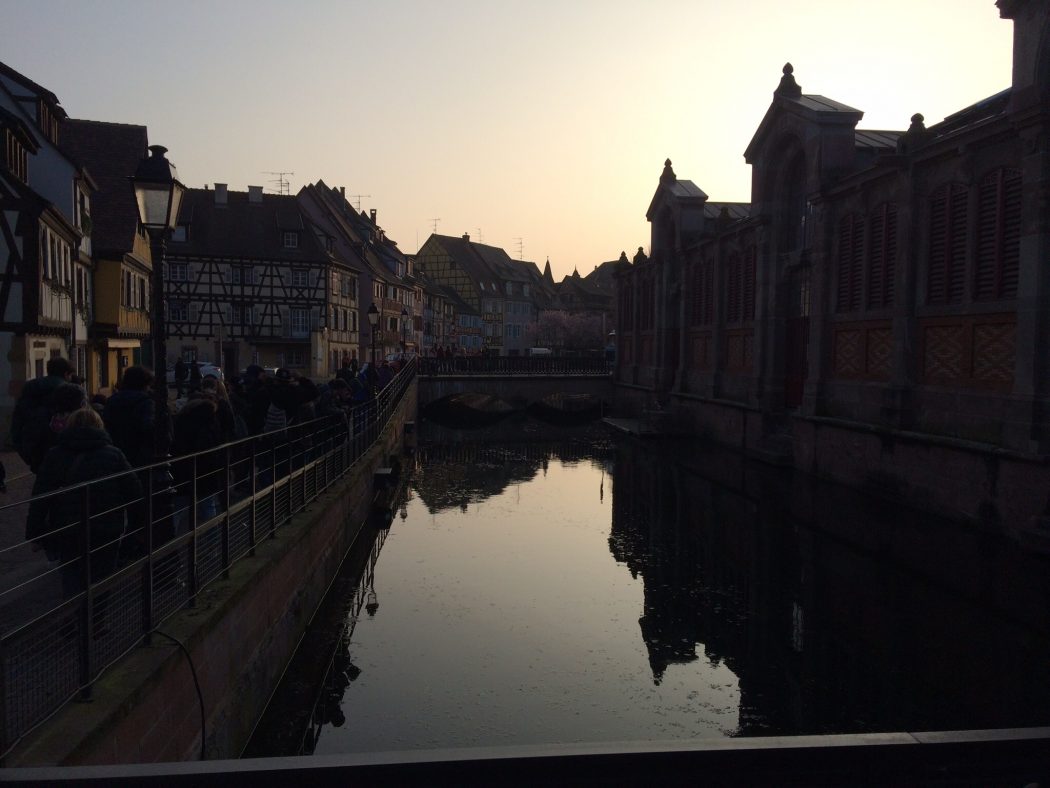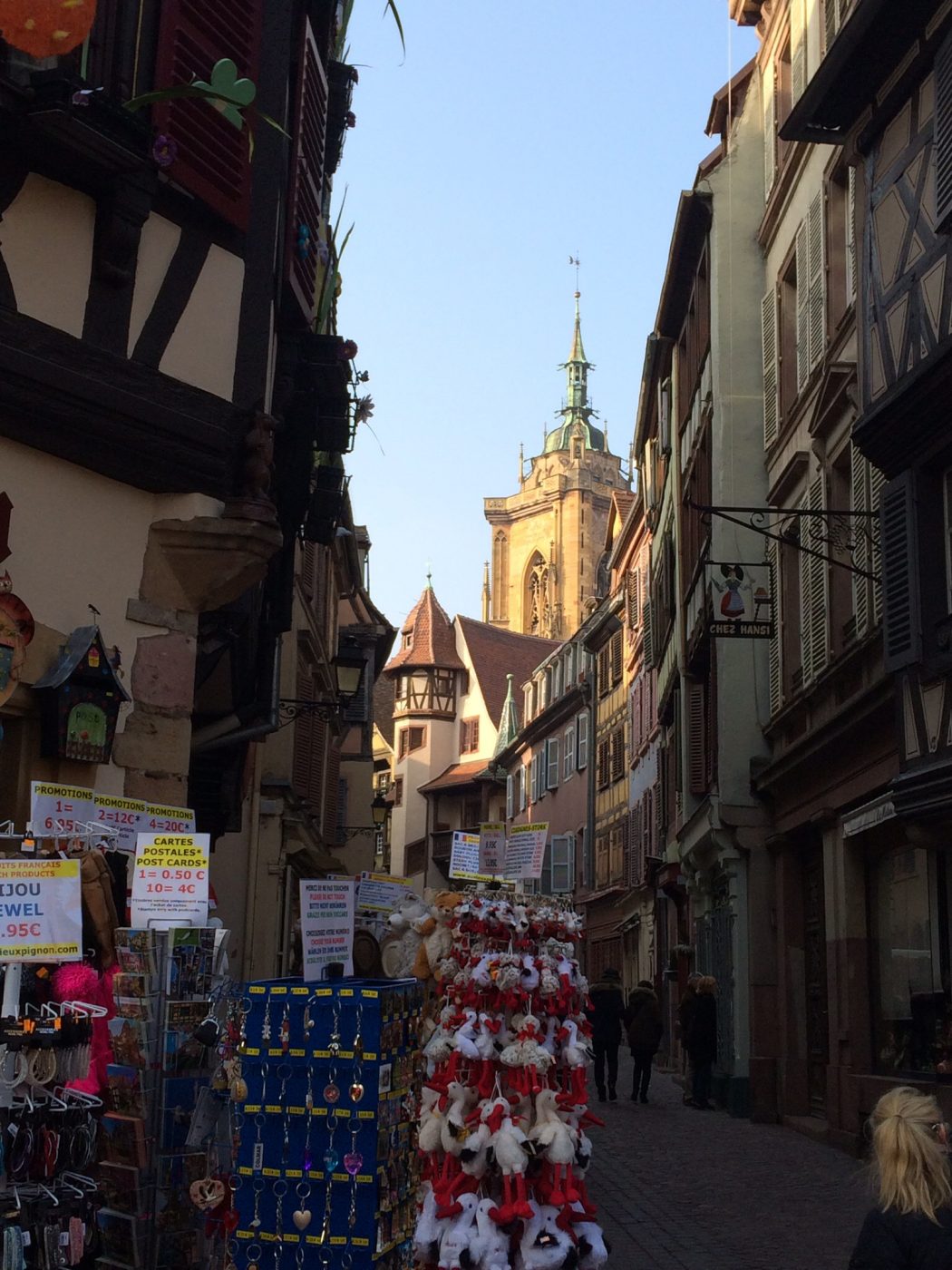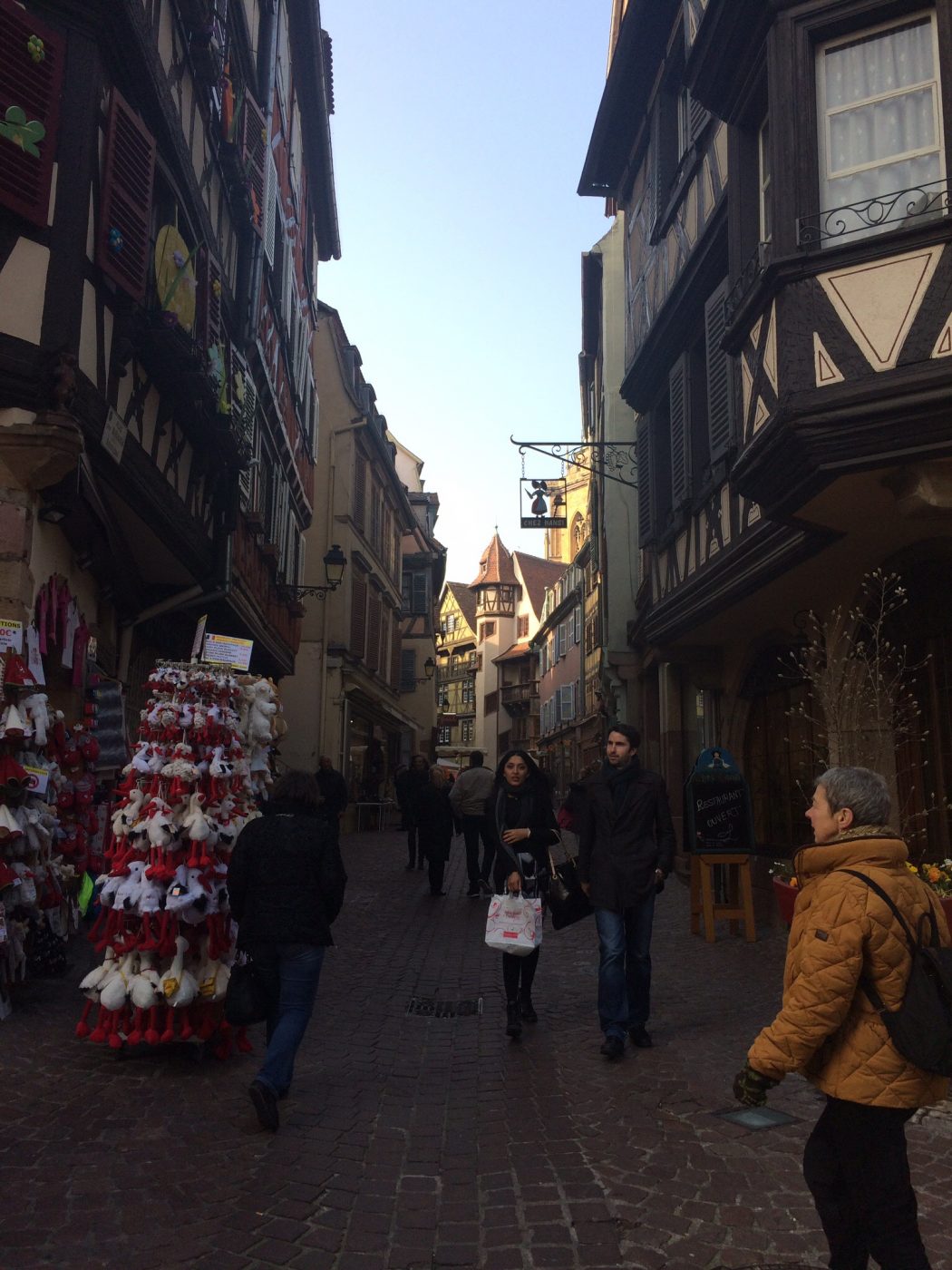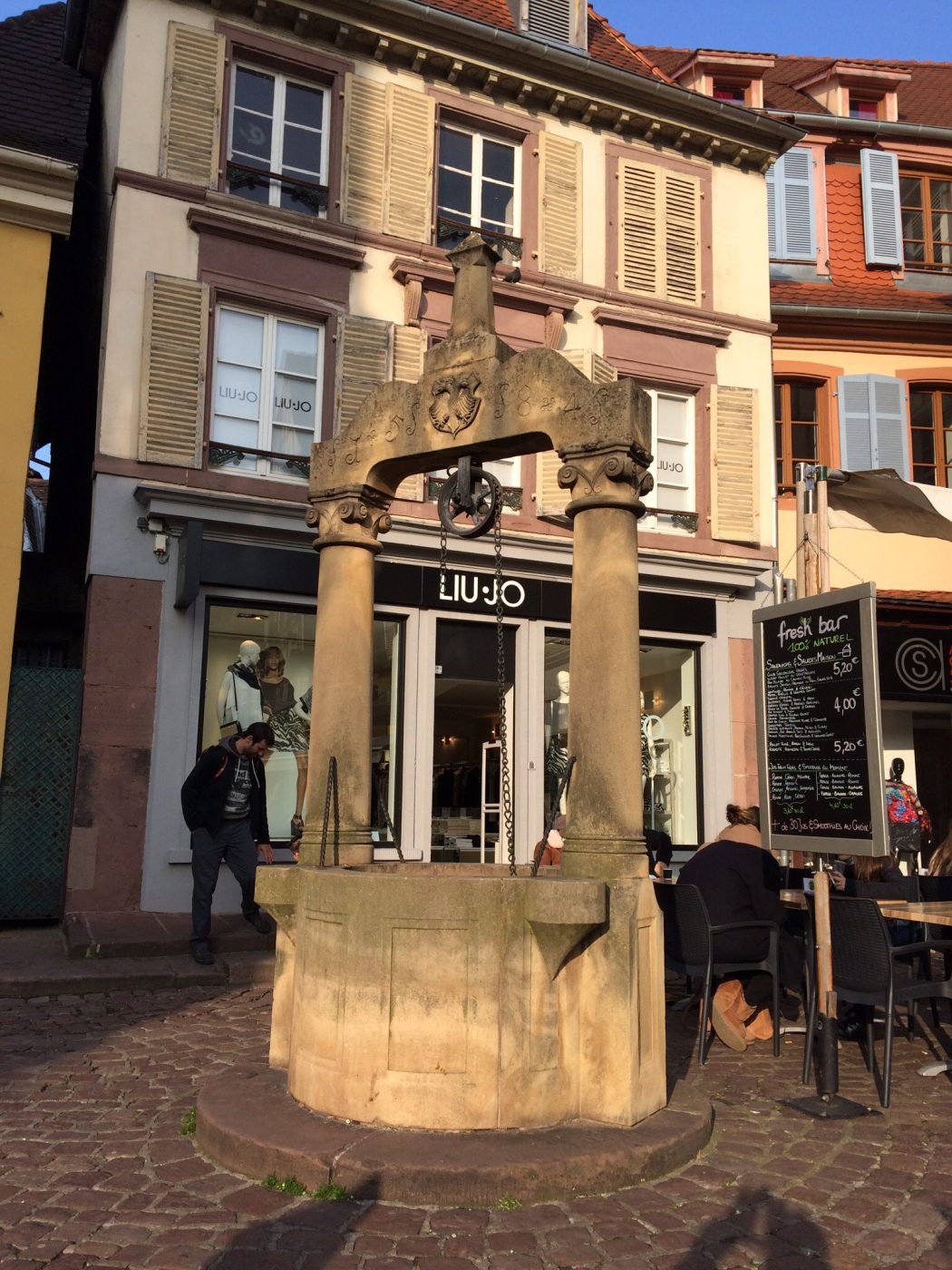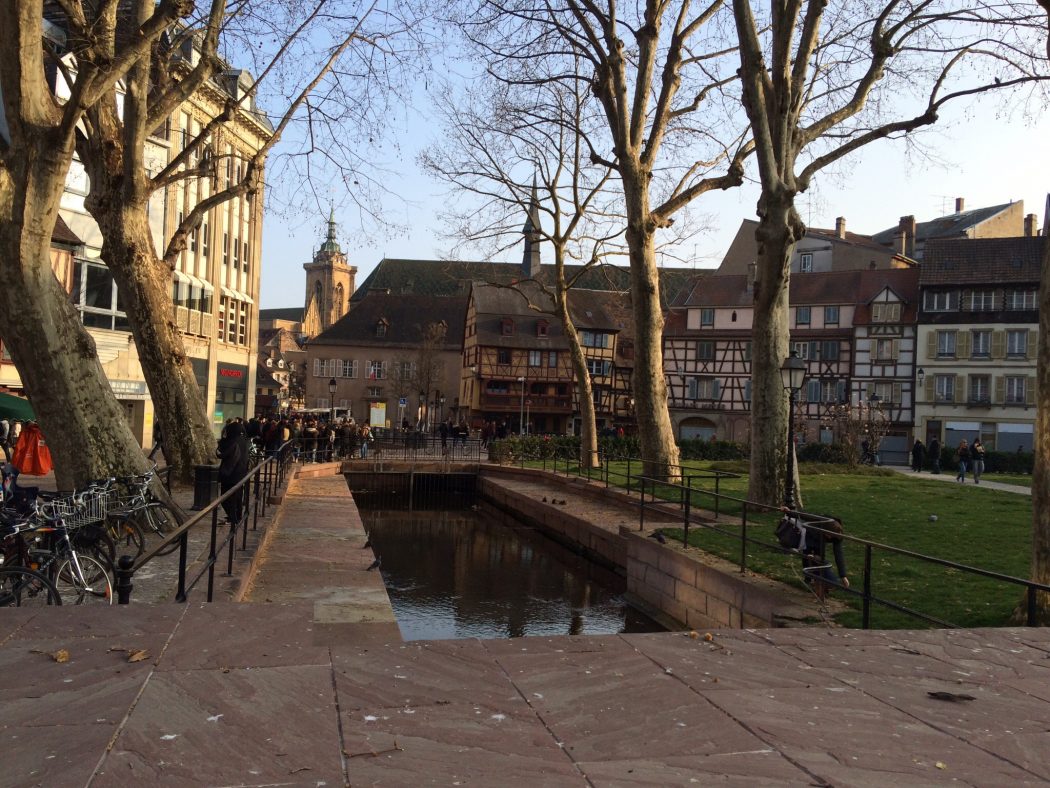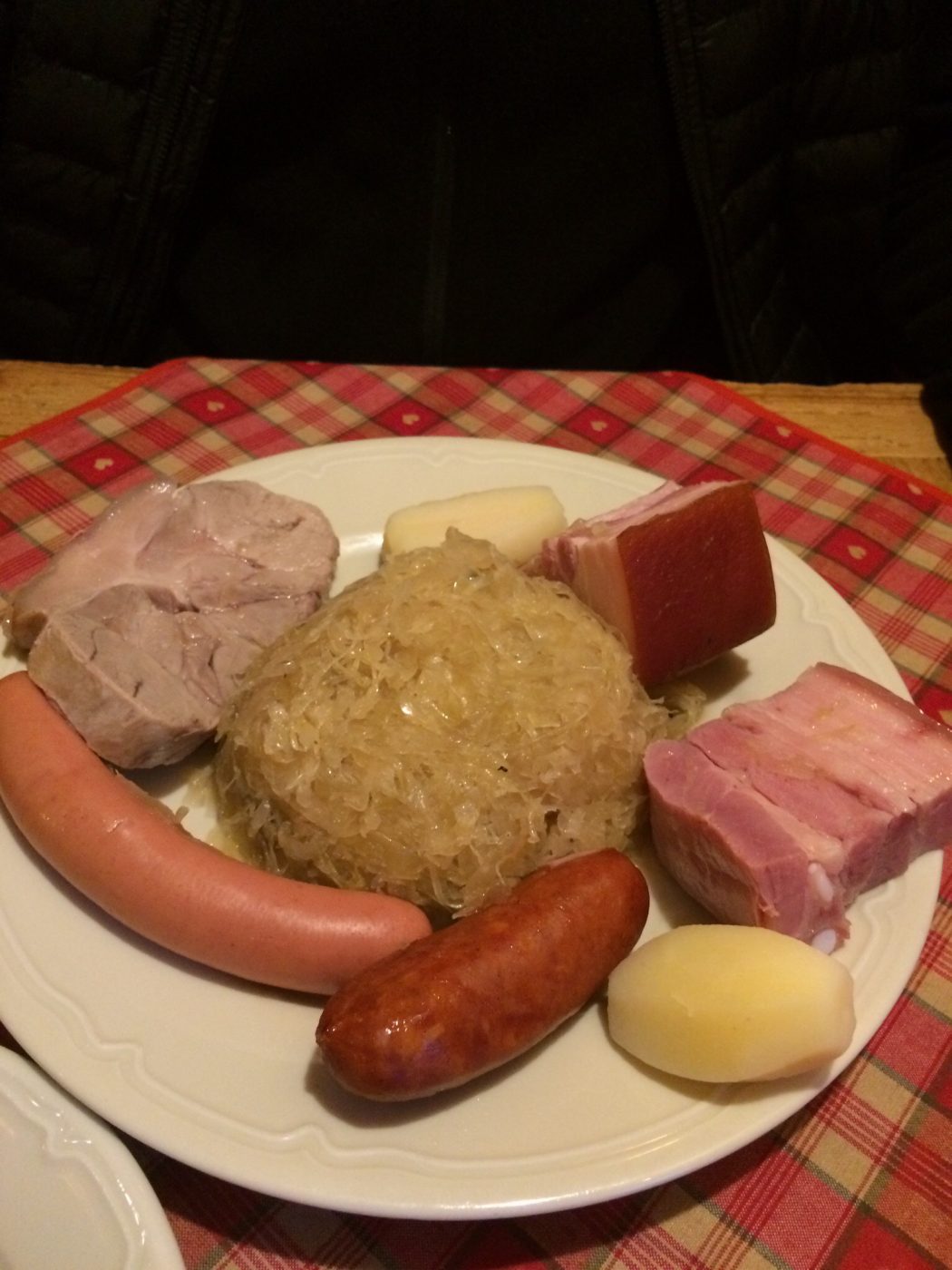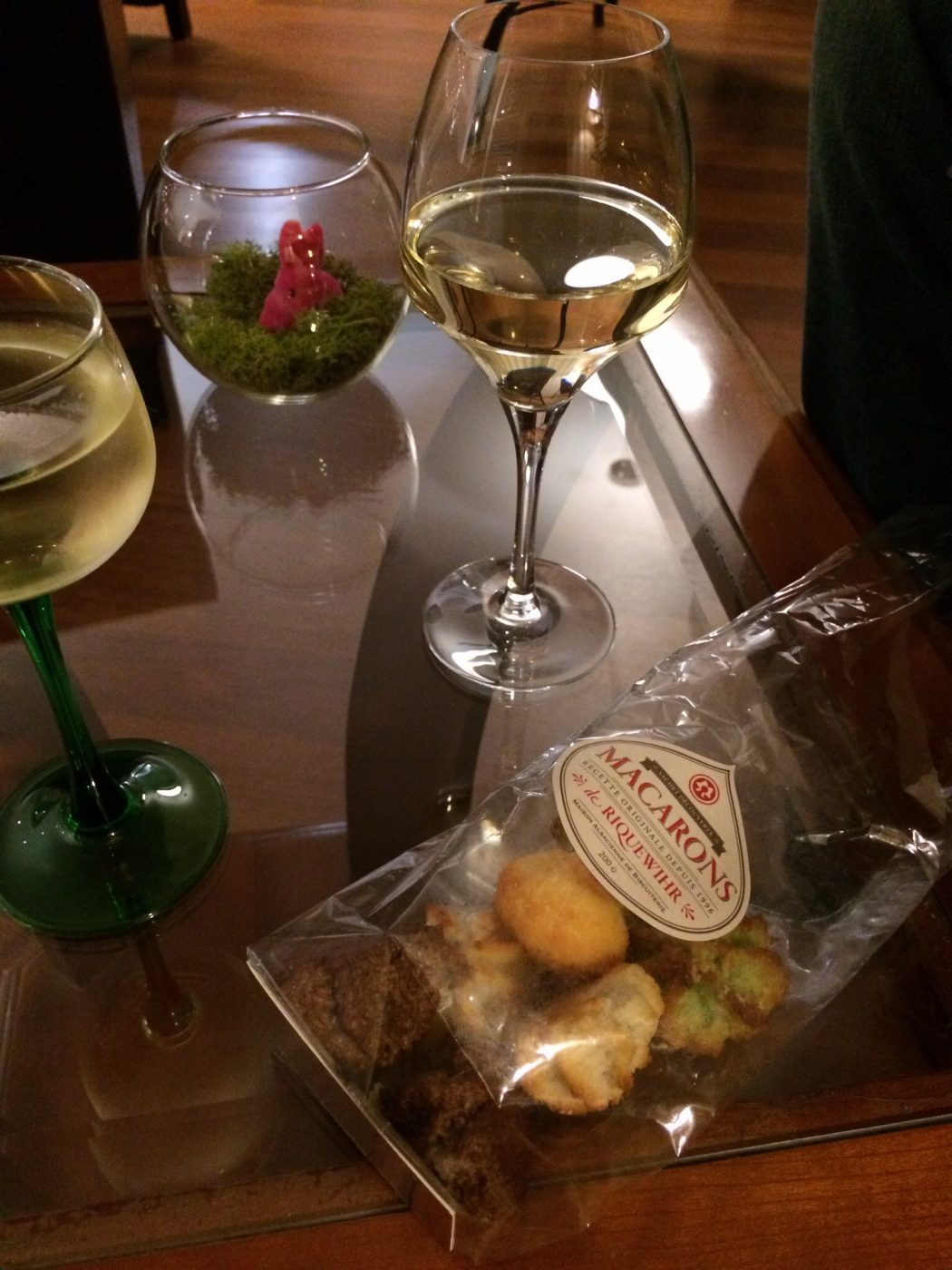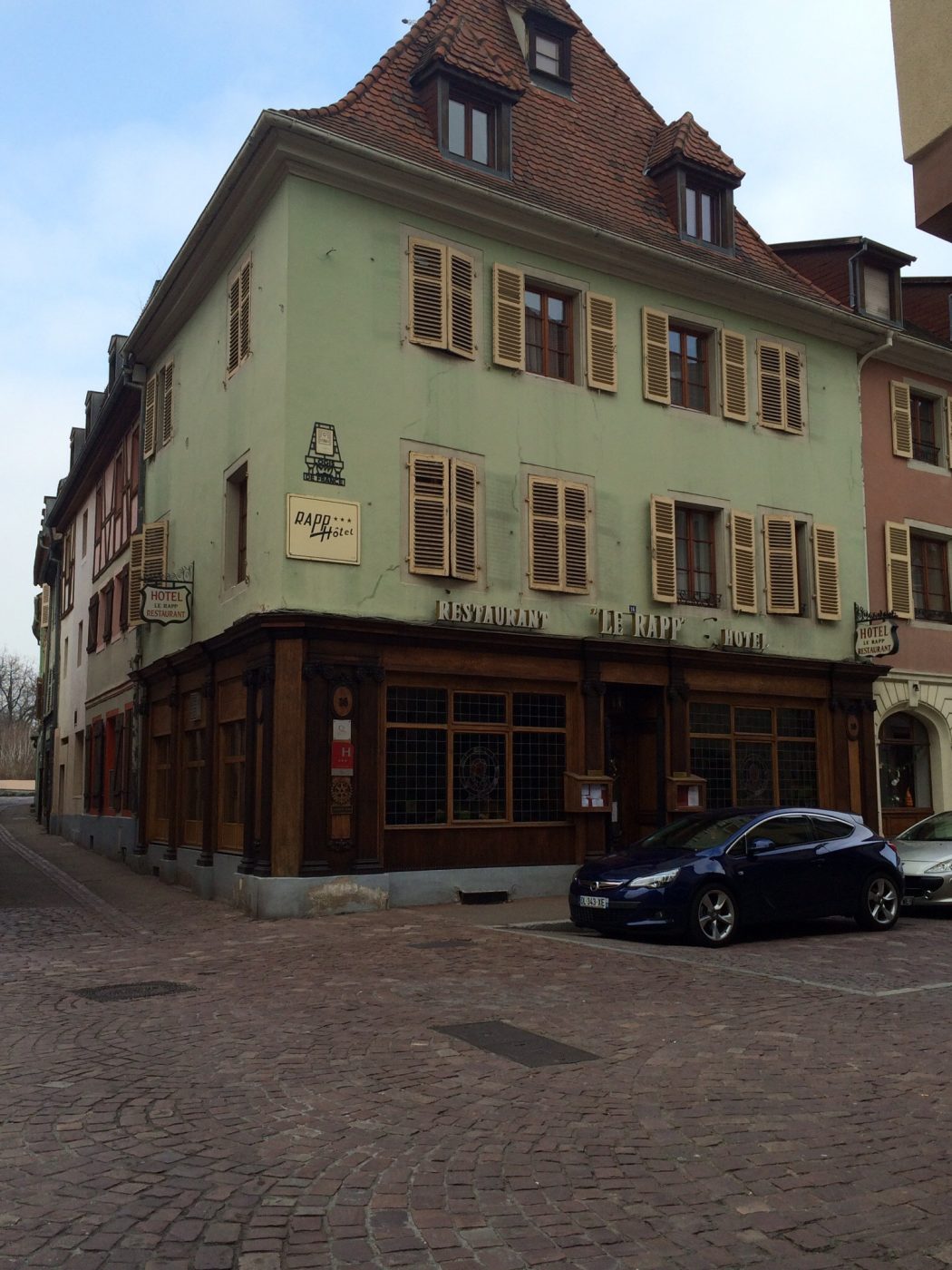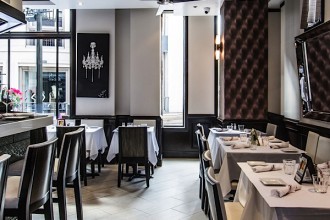Colmar Village
Written + Photographed by Ruth Cueves
[dropcap letter=”I”]t’s called “the Venice of France.” Founded in the 9th century, Colmar is a village in the Alsace region of the country, about 30 minutes south of Strasbourg. The area is known for its wine and culinary marvels, though admittedly the food is not much different than what you find in Southern Germany. This should come as no surprise, considering that the land was fought over so many times and belonged to both empires at different points in history. Colmar, however, has been beautifully preserved and boasts the types of cobblestone streets and half-timbered medieval and early Renaissance buildings tourists expect when visiting France.Colmar rests about two-thirds of the way south on the Alsace Wine Route, one of the oldest wine routes in France. The wine route’s rolling hills and winding roads run from the French/German border in the north, 170km down into the heart of the Alsace region. It is dotted with palaces and castles and passes through 70 wine-growing communes varying in size, each boasting its own vintage from vineyards within walking distance. The picturesque landscape makes the route a favorite for tourists interested in a French vacation that doesn’t include the hustle and noise of a more glamorous city like Paris. However, the French charm is undeniable and the allure of village life draws visitors in every year like clockwork.
Despite the proximity to Germany, those from the area will assure you that there is a difference once you cross into France. The wine region especially, has a way of pulling you back in time – but don’t be fooled into thinking that the simplicity means bland or boring meals. On the contrary, Alsatian cuisine is known for its blends of Germanic and French culinary styles to develop a flavor and essence all its own. Many of the dishes resemble those found in Germany, with heavy doses of sausage and ham served with dumplings, potatoes and sauerkraut. Sauerkraut in this area is not the same as you might find elsewhere; the flavor is slightly sweet with a hint of bite that is nicely complemented with sweet mustard and ham. Fruit preserves and fois gras have been staples of the region since the 17th century, so naturally they’re not hard to find. Honestly, it was comforting to know that the French embrace their traditions simply for the sake of tradition, even in the face of humanitarian debates over the production of this delicacy.
Much like the charm of the village and cuisine itself is the Colmar canals. A ride on the canal includes a short history lesson, complete with signposts of past floods and obvious decks which have served as important docking points through the years. In the summer, the docks are used as platforms for the sale of fresh produce among other fun finds, and their display over the water makes an already picturesque village feel lived in, as though you’re walking through an old postcard you only imagined was real.
As we float through the village, we catch glimpses of pedestrians sitting outside in the sunshine, sipping wine, beer or coffee. Sometimes, they smoke but not always. The tables are each adorned with solid colored tablecloths, the furniture, design and colors all deceptively simple – plain, unfinished tables with simple red or white tablecloths and simple benches. On each table, a sprig or two of lavender or perhaps a few short stemmed roses in pastel colors. There is a slight chill in the air so a headlamp runs all afternoon.
Unlike many cafes in Paris, you don’t hear accordions playing traditional French music, instead, you hear people talking, or noises coming from the kitchens as meals are prepared. Several restaurants boast brick ovens on their patios as the tarte flambé (or flamkuchen, in Germany) is a staple in this area. A tarte flambé resembles a very thin crust pizza except the sauce is not tomato based. Instead, it’s more of a cream-like slightly cheesy tasting sauce that is unique in this part of Europe. These patio ovens provide both heat and wafting scents of garlic, onions and bread which naturally, attract hungry shoppers.
Colmar, as mentioned, is known as the “little Venice of France.” The boats that float up and down the canal are twice as wide as those in la Serenissima and not nearly as ornate. The Colmar boats are made of wood and are often unpainted, leaving you to wonder how seaworthy they are … though the relaxing float atop the water, complete with fleece blankets and a glass of Riesling helps push the distrust away. While you float on those questionably rickety boats, there are homes along the water painted an array of vibrant colors, each color representing the traditional craft of the homeowner. Fisherman lived in houses painted differently from the butchers and likewise the teachers, millers and cobblers.
Aside from the boats on the canal, the similarities between the real Venice and le petit Venise end here. Venice, Italy is filled with twisting, narrow passages that run in every direction and require your attention lest you end up completely and utterly lost. In Italy, the buildings are tall enough to block the sunlight unless you are right on the water, and the water is filled with speedboat style taxis and water busses. In Colmar you have a single canal with two or three boats, slowly floating by. Down the canal you enter a residential zone and, once in it, no noise is allowed. All you hear are the gurgles from the fountains, the birds chirping in the trees above and, an occasional fish jumping from below the surface. It’s beautiful, calm, and amazingly dream-like. On my ride, I was offered a local wine whose name translates to Grandma’s kitchen.
Because of its location, Colmar does not attract quite as many American tourists as better known French cities. Instead, most of its visitors come from neighboring European countries. Sharply dressed men and women from Germany, Switzerland, Austria, Italy and Spain, parade through the streets with their dogs in tow. These extremely well-behaved pets accompany their owners to every restaurant and shop with not a single complaint from other tourists or shop keepers.
If sweets are your thing, you can get your fill as you walk down the Rue des Merchands, with countless gelato stands and candy shops. Chocolatiers sell everything from fine chocolate truffles to decadent hot drinks and bakers sell cakes that look too beautiful to eat. You’ll also find shops with Alsatian specialties like dried fruit. But, before you scoff at the at the idea of raisins or other dried fruits you might know, consider trying some of these handmade delicacies like dried apples, candied baby pears, sugared ginger, coconut chunks, mango, papaya, pineapple, figs, and dates. Most of the merchants speak English and are always happy to practice their language skills with American visitors.
Late in the afternoon, the smell of warm coconut will awaken your senses and draw you to the tiny bakery with open windows selling fresh macarons – and not just in the traditional coconut but also in orange, strawberry, blueberry and chocolate. They were all outstanding, but the orange ones were surprisingly addicting. Like most pastry shops, the delicacies were all handmade. Out of a narrow window looking over the sidewalk, an elderly French woman leans towards the pedestrians, offering fresh macarons to anyone who meets her hand with theirs. The woman was almost cartoonish, with chubby, rose-toned cheeks and her silver hair up in a bun. She wore her wire-rimmed glasses around her neck, hanging slightly over her apron. At first glance, she looks like Mrs. Clause except this was not a costume for the pleasure of tourists. If you’re lucky you’ll get a warm, slightly toasted macaron fresh out of the oven. It’s a good idea to have a few euros handy, as it’s virtually impossible not to walk away with a bag for later.
Collar is full of many things, among which are Colmar’s celebrities. One worthy mention is Auguste Bartholdi, who is best known for sculpting the Statue of Liberty. On the 100th anniversary of his death, a 12-meter high replica was erected in the center of Colmar (but outside of the historical area), in his honor.
Naturally, since Colmar is the capital of Alsatian wines, one cannot talk about the village without discussing the wines. Each with its distinct flavors, Alsatian wine tends to be more dry than sweet. Sparkling wine is carefully labelled as such since the French are very clear that unless it is derived from the Champagne region, sparkling wine is just that – sparkling wine. Either can be purchased along the wine route or at any of the fine shops in the towns. In Colmar, wine valued at several hundred euros per bottle can be found in shops run by the village sommeliers, like the shop on the ground level of Maison Pfister. On the edge of the historical district lies the Musée Unterlinden, which houses world famous religious masterpieces. If good food, good wine, well-preserved historical architecture, museums, scrumptious pastries and delicious coffee are things you enjoy and if you enjoy them with nothing more than the sound of birds chirping in the background, Colmar may very well be next on your travel bucket list.

